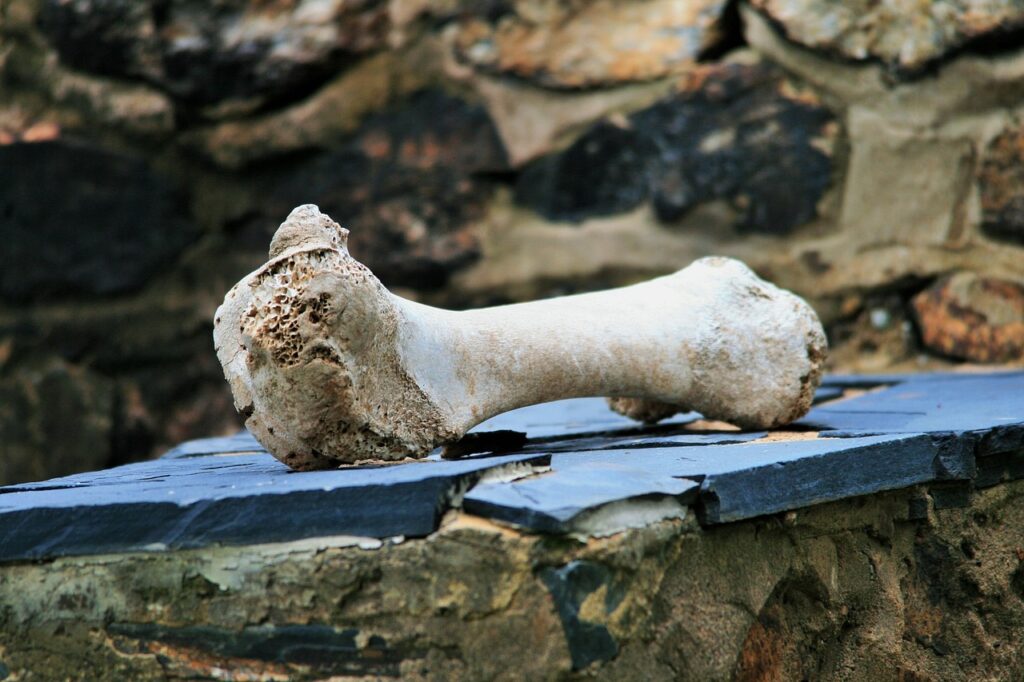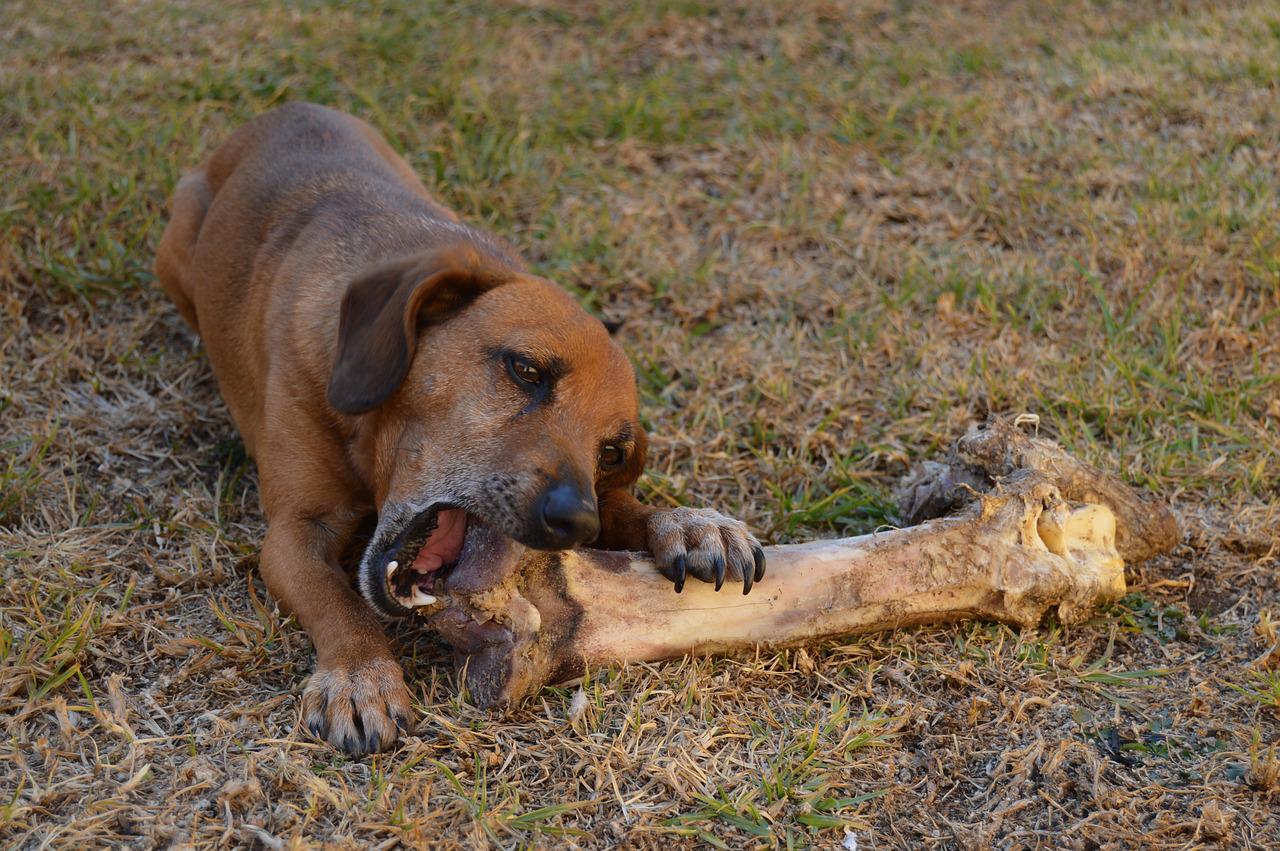Ostrich bones are highly rated and safe for most canines if properly handled and given the right way. These bones are perfect for most dogs, especially those with sensitive stomachs because they contain low fats and are hypoallergenic.
The best bone part from an ostrich is the one picked from the lower leg. An ostrich’s lower leg is sturdy enough to withstand any chewing from your dog. It also contains plenty of nutritious marrow.
Some benefits your dog gets from chewing bones include; mental stimulation, nutrient absorption, ease of teething irritation, increased saliva production which will prevent the building up of plague, and cleaning your dog’s teeth.
However, as much as bones and dogs are natural pairs, the bones can pose some harm to your dog. For instance, cooked bones can injure your dog since they easily splinter. In addition, raw bones, if not handled properly, can cause food-borne illnesses.
Read on to get more detailed information on benefits of ostrich bones. This information will help you clear any doubt you have towards offering the bones to your dog.
Key benefits of ostrich bones to your dog
Low-fat dog chew and Rich in proteins
It is a high-quality, natural, low-fat dog chew. An ostrich bone has about 2.4% fat which is highly recommended. Ostrich bones contain 29.6 % protein that helps in muscle building.
Grain and gluten-free hypoallergenic
Pure ostrich bones are hypoallergenic and easy for your pup to digest. They perk up dieting dogs and those prone to pancreatitis.
Unique honeycomb structure

Ostrich bones do not splinter compared to collagen bones. Instead, it breaks down into perfectly safe and incredibly digestible grit-like particles. Collagen bones are preferred for broth since they are thinner and prone to cracking.
Big size and lightweight
They are fairly large and fit for all breeds. However, it will surprise you how lightweight these bones are despite their big size. They are light due to the honeycomb interior, and even smaller dogs can enjoy them.
Great chews for puppies
From the age of twelve weeks, puppies can have ostrich bones. At this point, your pup will be teething. The bone will come in handy as a teething toy and save your beautiful furniture from those tiny teeth. They will also aid in relieving sore gums since they are soft on those sensitive teeth.
However, it is important to ensure a puppy consumes a small number of ostrich bones since they contain high calcium concentration and high protein content.
Dental health
What better way to make your pet teeth whiter? An ostrich bone is a natural teeth-cleaner and a long-lasting dog chew.
Odorless
If left under the sun for long, most bones tend to smell. However, an ostrich bone has no odor. This makes it also suitable for humans.
Are ostrich bones safe for dogs?Basic precautions to protect your dog
Before deciding whether you can give your dog bones, it is advisable to always consult with your veterinarian. This way, your vet will give you the go-ahead and tell you the right time to give bones.
You can protect your dog by following the precautions below while giving it an ostrich bone;
Supervision is paramount
Please do not take your eyes off your dog each time it is gnawing a bone. This will help you to be cautious when the bone is worn out and can be swallowed easily. You will also be in a position to intervene should the bone shatter and prevent your dog from swallowing it.
It is appropriate to allow your dog to enjoy chewing the bone for 10-15 minutes at a time before taking it away and storing it for later. Administer the bones in intervals and let it be a routine.
Avoid the table scraps.
It is so difficult ignoring your pup’s cute, huge eyes asking for a drop of bone from your plate. No matter how much your dog begs beside your meal table, do not give in to its plea. Giving your dog cooked bones is highly discouraged.
Bones become brittle once cooked. Therefore, giving it to your dog can make your dog’s mouth have cuts due to the sharp fragments that break from the bone while chewing. But, of course, your dog’s worst scenario is choking from the tiny bones.
In addition to posing as a hazard, bones subjected to the cooking process have been stripped of their beneficial nutrients.
Select the appropriate size fit for your dog
Always offer your dog a bone that is at least longer than its muzzle. That way, your canine will not get to swallow it as a whole.
Learn to through bones that have been gnawed down to a point your dog can swallow them. Avoid giving your dog bones that have been cut lengthwise since they are prone to breaking easily if subjected to pressure from chewing.
Get to know your dog’s habits and needs.
The owner knows their dog better than anyone. Suppose yours is an aggressive chewer, you should know they will likely break bones easily. If this is the case, giving the dog good quality chew toys that can withstand intense chewing is better.
You can also opt to give the bone to your dog once he/she is full. Wait until after meals since the dog will be reluctant to chew too hard. You might be surprised to realize your dog can even incline to eat the bone.
Uphold safe handling
Practice handling the dog’s bones properly at all times. If you bought plenty of bones for your dog, keep them frozen and remove them one at a time. The used bones between the chewing session can be stored in the refrigerator for 3-4 days and then disposed of.
Cross-contamination is another risky area. Any household surface your dog has come in contact with should be disinfected before reuse. Also, avoid cross-contamination of the kibble bowls.
Adjust feeding regimens accordingly
Raw bones usually have meat residue, cartilage, and other attached soft tissues. Naturally, bones with marrow are high in fat. Therefore, it is advisable to adjust your dog’s diet, especially if you feed it with marrow bones.
Conclusion
Ostrich bones are fantastic for dogs that like to chew since their outer lining is hard enough. The bones also do not produce splinters due to the honeycomb interior. So, with your supervision, let your dog enjoy chewing the bones comfortably.

